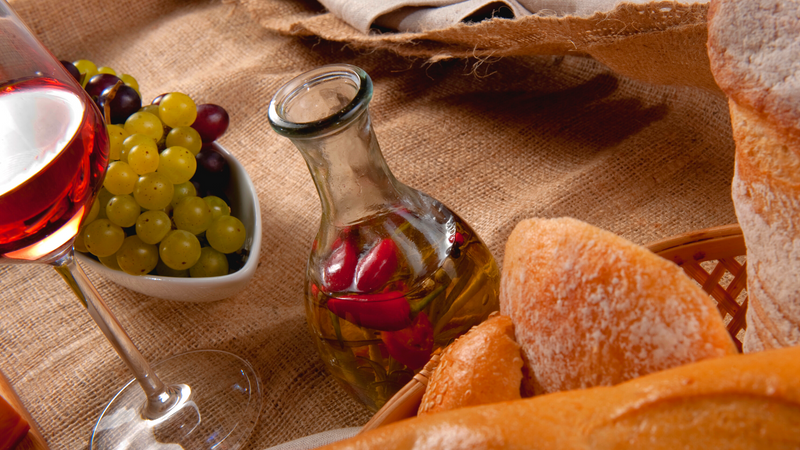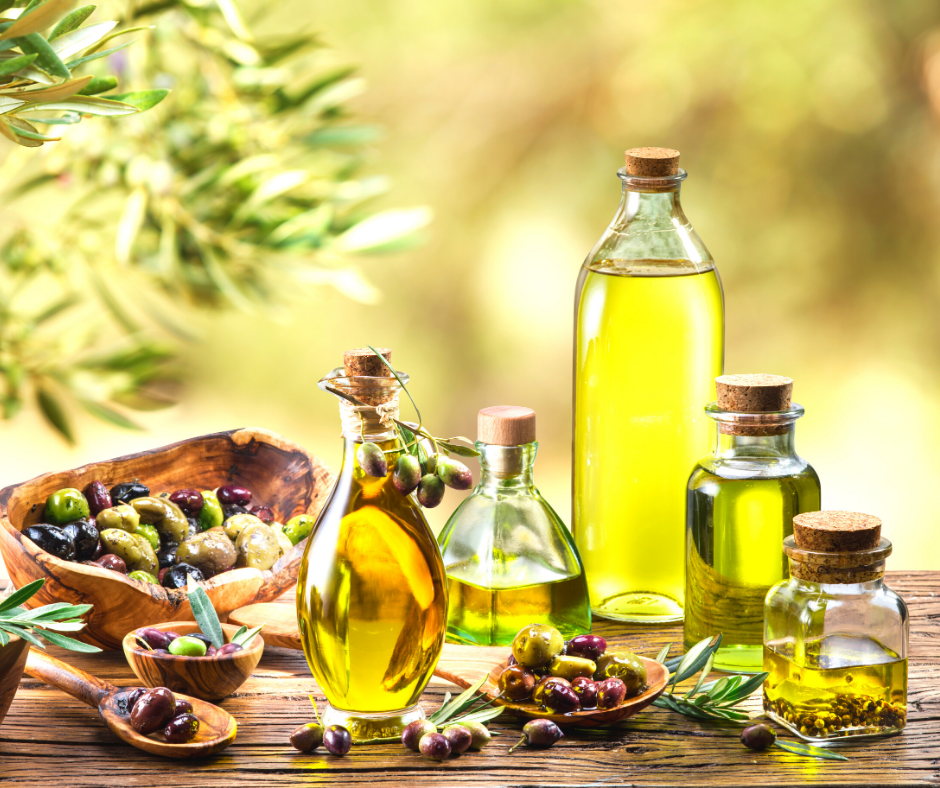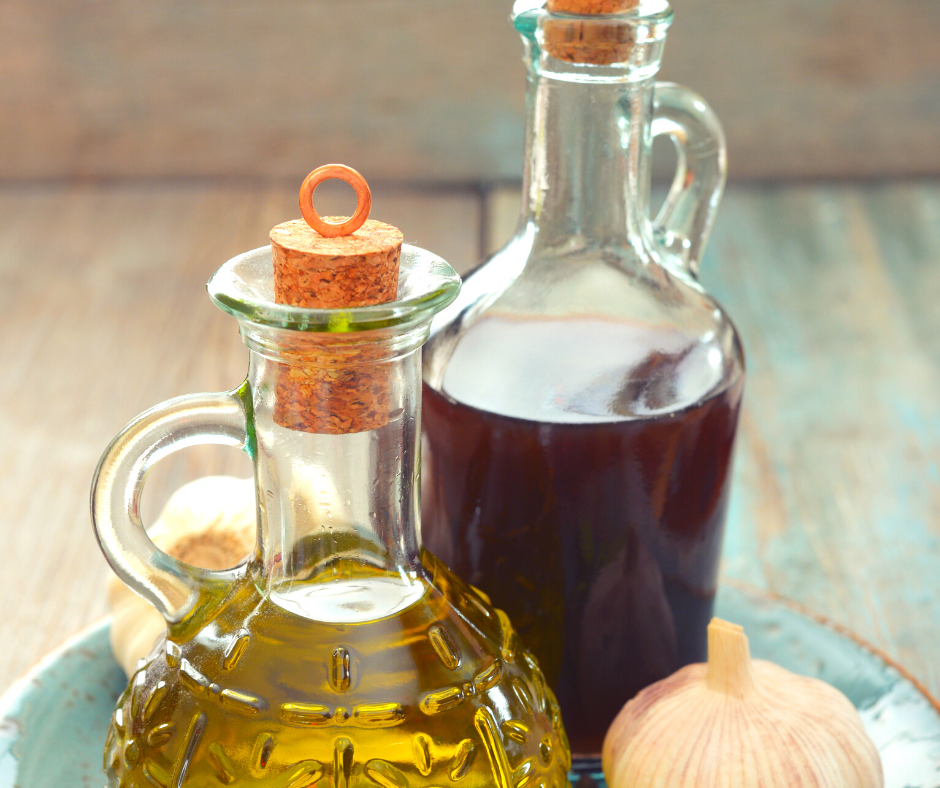Olive Oil and Wine: Who Knew They Were So Similar?

Olive oil and wine, two things that come to mind when we think flavor, variety and history. Dating back to ancient times, both possess the ability to add more excitement to a dish or an evening, making both popular pantry items for day-to-day cooking and relaxation. Although both are fruit juices, the similarities don't end there. Olive oil and wine share many common aspects, not just in how they are grown, but how they're evaluated as well. Let's take a moment to delve into the world of premium olive oil and delicious wine as we explore the similarities between the two.
Olive oil and wine...who knew they were so similar?
How They're Made

Wine and olive oil share similarities in how the olives and grapes are grown, harvested, crushed, bottled and tested for purity and quality. Fine olive oil is a product of many countries around the world, including Italy, but not all olive oil that comes from Italy is the real deal. Italy produces the largest quantity of fraudulent olive oil, but also award-winning varieties as well, and it also produces some of the best quality wine available today, which is no coincidence. Oftentimes, grape vines and olive trees are found growing together in vineyards, since they both require a similar climate. Olive trees act as protection for grape vines, shielding them against strong winds, and with both being self-pollinators, neither rely on the help of insects or birds to pollinate their flowers.
Grapes tend to reach maturity first, often between the months of August and September; however, some varieties reach maturity later, in October and November. Once the late bloomers have been harvested, the olives are ready for their turn, which means that once the wine press work is complete, the olive pressing can begin. Most successful in a warm, dry environment, grapes and olives are harvested one right after the other, which helps to keep growers working steadily for long stretches of time.
In the Northern Hemisphere, quality olive oil usually arrives to the United States in early January, with the exception of California, which tends to receive their olive oil shipments in late November/early December. In the Southern Hemisphere, crush dates are typically in May and therefore, the freshest olive oils available between June and December are derived from countries like Africa, Australia, Chile and Peru.
How They're Tested
Olives and wine are tested with similar terminology, including:
- Aroma
- Taste
- Appearance
There are two tests required to consider an olive oil to be extra virgin. These are:
- Taste testing
- Chemistry analysis by a certified lab
For example, Free Fatty Acid is an indication of the quality of the fruit.
Much like wine sommeliers, olive oil sommeliers analyze olive oil, based on their aromas and flavors, often giving them a rating. Although very similar to wine testing, olive oil testing utilizes the following characteristics to categorize high-quality extra virgin olive oils:
- Fruitiness
- Bitterness
- Pungency
- Balance
In addition to the various similarities of how they're tested, olive oil and wine both have their good years and their bad years, which is heavily dependent on the weather. For example, although not preferred, grapes tend to handle moisture better than olives, so if the season is particularly wet, the olive crops may suffer, resulting in less quality olive oil. And any dramatic change in climate can have a direct impact on the flavor of the grapes, making the ideal climate imperative to the flavor and quality of both wine and olive oil.
How They're Different

Although it's obvious that olive oil and wine are indeed two different products, the similarities in how they're grown and produced are uncanny. However, one of the biggest differences between the two is that olive oil does not improve with age, like wine. That's why it's recommended to store unopened bottles of olive oil in a cool, dark place and be sure to use any opened bottles within a year of their “vintage” date, or in other words, the harvest date, which will be printed on the bottle. If you're unsure, the best way to test olive oil at home is to simply smell it and determine if it smells fresh.
The similarities between olive oil and wine are interesting, and when you delve into how each are grown, produced and tested, it's important to note that this process is crucial to the quality of olive oil (or wine) that you buy. One of the biggest issues with grocery store olive oil is that these products do not meet the chemistry requirements to be considered extra virgin. They also suffer sensory defects that will disqualify them from being extra virgin. The problem with bad olive oil is not necessarily additives or chemicals; however, some are adulterated with seed oils or deodorized olive oil.
Be sure to buy your olive oil from a shop that specializes in only the finest quality oils. When you take the time to purchase a high-quality olive oil, crafted with care, you'll taste the difference immediately.
At Estero Bay Olive Oil & Tea, we offer a large selection of high-quality olive oils to add flavor to any dish! Visit www.esterobayoliveoil.com to shop our olive oils today!
